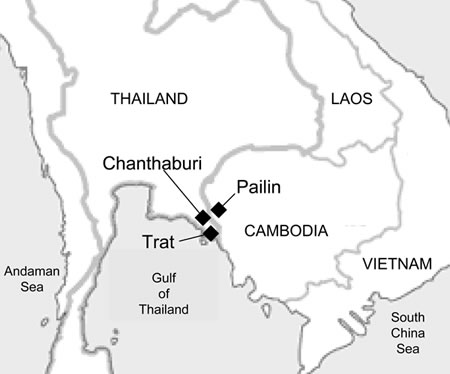Pailin Blue Sapphire: A Gemstone with a Storied Past

A Rich Mining History
The border region where Thailand meets Cambodia has been a treasure trove for ruby and sapphire for centuries. This area, particularly around Thailand’s Chanthaburi and Trat provinces, saw a boom in mining activity during the 1970s and 1980s. Why the surge? In the early 1960s, Burma’s Mogok ruby mines were seized by Ne Win’s military coup, cutting off a major global supply of rubies. The world turned to Thailand, which had plenty of facetable material - though its rubies leaned toward a darker, garnet-like red. To explore more about global sapphire sources, see Where Are Sapphires Found.
Pailin’s Troubled Past
On the Cambodian side, Pailin was a thriving hub thanks to its rich gem deposits. But wealth attracts trouble. The Khmer Rouge, Cambodia’s communist insurgents, targeted Pailin’s resources starting in 1967. By 1975, under Pol Pot’s brutal leadership, they seized control of Cambodia, ruling for four devastating years. Their regime was marked by radical agrarian policies and the genocide of an estimated 1.5 million people. The Vietnamese army ousted them in 1979, but the Khmer Rouge clung to Pailin as their final stronghold until as late as 2007, when surviving leaders faced justice through an international tribunal. Pol Pot himself died in 1998, likely by suicide, after years of hiding in Thailand and northern Cambodia. Learn more about the region’s gemstone wealth, including Golden Triangle Sapphires.
The Allure of Pailin Sapphires
Pailin’s blue sapphires were once the darlings of the gem trade, prized for their rarity and stunning range of colors - from delicate light blues to deep, vivid hues. Their purity and intensity rivaled the famed Kashmir Sapphire and Burmese sapphires, often outshining those from Sri Lankan Sapphires or Australian Sapphires. But here’s the darker side: the Khmer Rouge funded their insurgency - and later their regime - with profits from these gems, earning Pailin sapphires the grim label of one of the first “blood gemstones.” Today, these sapphires are scarce, as the mines are believed to be nearly exhausted. For a deeper dive into sapphire characteristics, visit Sapphire Gemstone Information.

The Landmine Legacy
Sadly, sapphires weren’t the only thing mined in Pailin. The region became one of the most heavily landmined areas in the world during the Khmer Rouge era. Even today, travelers are warned to stick to marked roads, and the United Nations continues to support demining efforts. It’s a stark reminder that Pailin’s beauty comes with a heavy history.
Frequently Asked Questions
What makes Pailin sapphires special?
Pailin sapphires are renowned for their vivid blue hues and exceptional clarity, often compared to top-tier sapphires from Kashmir and Burma.
Are Pailin sapphires still available?
They’re extremely rare today, as the mines in Pailin are thought to be largely depleted.
Why are Pailin sapphires called “blood gemstones”?
The Khmer Rouge used profits from sapphire mining to fund their violent regime, linking these gems to conflict and suffering.
Is it safe to visit Pailin today?
While demining efforts continue, visitors are advised to stay on marked paths due to the risk of unexploded landmines.

